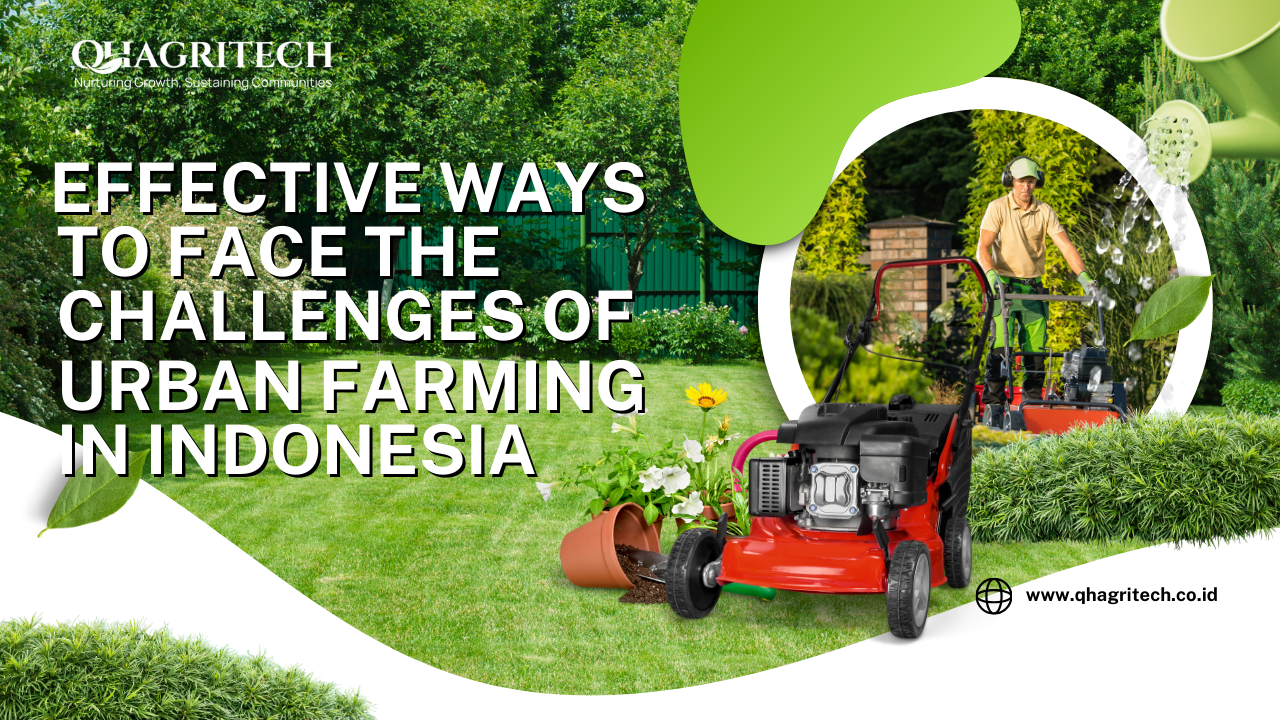Urban farming in Indonesia has gained traction in recent years as an innovative solution to food security, sustainability, and environmental challenges in rapidly growing cities. However, while the benefits are clear, urban farming faces several obstacles that hinder its growth and success. Limited space, access to resources, financial constraints, and climate challenges are some of the key hurdles that urban farmers encounter.
Fortunately, there are numerous solutions emerging to help overcome these challenges and ensure the success of urban farming in Indonesia. We will explore the key challenges and practical solutions that are making urban farming in Indonesia more accessible, sustainable, and impactful.
Challenges of Urban Farming in Indonesia
1. Limited Space
As Indonesia’s cities continue to grow, available land for farming becomes scarce. Urban areas are characterized by high population density and infrastructure, which leaves little room for agricultural activities.
2. Lack of Resources
Urban farmers often face difficulties accessing essential farming inputs, such as quality seeds, fertilizers, water, and tools. Without these, maintaining a successful urban farm can be a struggle.
3. Climate and Weather Variability
The tropical climate of Indonesia can be unpredictable, with sudden floods, droughts, and fluctuating temperatures. These weather patterns can disrupt farming activities and negatively impact crop yields.
4. Limited Knowledge and Education
Many urban dwellers lack the knowledge and expertise required to grow crops sustainably. The absence of proper training can result in inefficient farming practices and lower success rates for urban farms.
5. Financial Barriers
While urban farming offers great potential, it often requires an upfront investment in tools, seeds, and infrastructure. Many urban farmers face financial constraints, making it difficult for them to start or expand their farming ventures.
Solutions to Overcome Challenges of Urban Farming in Indonesia
1. Vertical Farming for Maximizing Space
Vertical farming is an innovative method that involves growing crops in stacked layers, making it an ideal solution for urban areas where space is limited. By utilizing vertical space, farmers can grow more crops per square meter, increasing yields without requiring additional land.
Vertical farming systems often use hydroponic or aeroponic techniques, which reduce water and space usage. Benefits: Maximizes limited urban space; reduces the need for soil and water; suitable for rooftops, walls, and indoor environments.
2. Hydroponics and Aquaponics Systems
Hydroponics (growing plants in nutrient-rich water) and aquaponics (combining fish farming with plant cultivation) are efficient systems that require less space and water compared to traditional farming.
These methods can be implemented in small urban spaces, such as rooftops or even apartments, allowing urban farmers to grow fresh produce and fish with minimal environmental impact. Benefits: Reduces the need for soil, making it ideal for urban environments ; requires less water and space; provides a steady source of both plants and fish, promoting food security.
3. Rooftop Gardens for Sustainable Food Production
Rooftop gardens are a valuable resource for urban farming in Indonesia. By converting unused rooftop spaces into green gardens, cities can create sustainable food sources without taking up valuable land.
Government incentives and local initiatives can encourage the development of rooftop gardens, providing both food and environmental benefits. Benefits: Utilizes otherwise unused rooftop spaces; reduces the urban heat island effect by adding greenery; promotes local food production, reducing dependence on imported food.
4. Community-Based Urban Farming
One solution to resource and space constraints is the creation of community gardens. These shared spaces allow urban residents to pool resources and knowledge, making farming more accessible. By collaborating with neighbors, urban farmers can share tools, seeds, and labor, reducing costs and increasing efficiency.
Community gardens also foster a sense of solidarity and environmental responsibility. Benefits: Encourages cooperation and resource-sharing; reduces costs for individuals by pooling resources; promotes social cohesion and environmental awareness within communities.
5. Financial Support and Microfinancing
Financial constraints are one of the biggest barriers to starting and scaling urban farms. Microfinancing and small-scale loans from NGOs, government programs, and private institutions can provide the necessary capital for urban farmers to purchase essential farming tools, seeds, and infrastructure.
In addition, crowdfunding campaigns can help support local urban farming initiatives. Benefits: Provides capital for initial investment and expansion; encourages entrepreneurship and innovation in urban farming; facilitates access to necessary farming resources for low-income urban farmers.
6. Education and Training for Urban Farmers
One of the most effective solutions to overcome the knowledge gap is to implement training programs and workshops on sustainable farming practices. Local governments, NGOs, and community organizations can offer training sessions on topics such as hydroponics, organic farming, and resource management.
These programs can equip urban farmers with the skills they need to run successful farms and adopt eco-friendly farming practices. Benefits: Increases knowledge and expertise in sustainable farming; provides hands-on experience for aspiring urban farmers; helps farmers avoid common mistakes and improve crop yields.
7. Climate-Resilient Farming Practices
To mitigate the impacts of climate variability, urban farmers can adopt climate-resilient farming practices such as rainwater harvesting, mulching, and using drought-tolerant crops.
By employing these strategies, urban farmers can better withstand extreme weather conditions like floods and droughts, ensuring more stable and consistent crop yields. Benefits: Reduces dependency on unpredictable weather patterns; improves water conservation and reduces waste; promotes long-term sustainability in urban farming practices.
8. Government Policies and Urban Farming Incentives
Government support plays a crucial role in the success of urban farming. Policymakers can offer incentives, subsidies, or grants to support urban farming initiatives.
By promoting policies that encourage urban agriculture, such as tax breaks, access to land, and resource allocation, the government can help foster a more sustainable and thriving urban farming sector. Benefits: Encourages urban farming through financial and policy support; reduces barriers for small-scale farmers; promotes sustainable urban development.
Find out the latest information about technology in agriculture with QH Agritech. We will help you upgrade your knowledge on the latest agricultural trends in Indonesia and abroad universe!







